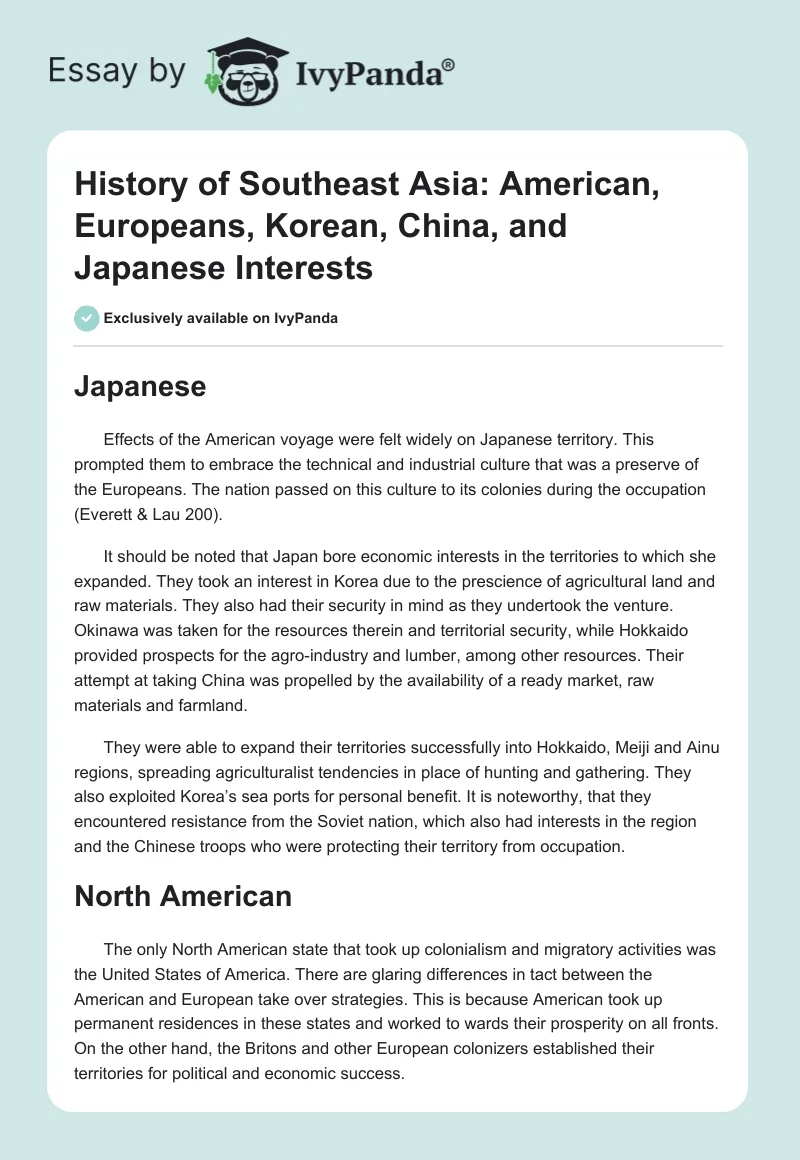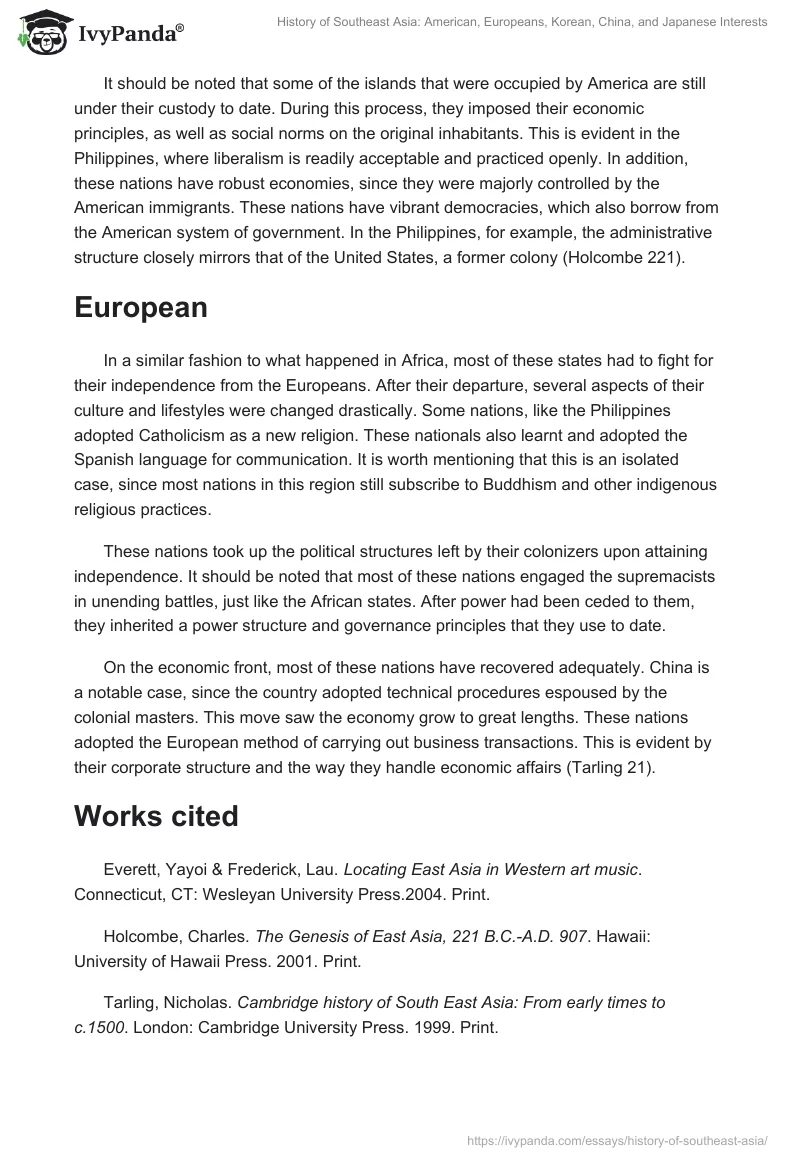Japanese
Effects of the American voyage were felt widely on Japanese territory. This prompted them to embrace the technical and industrial culture that was a preserve of the Europeans. The nation passed on this culture to its colonies during the occupation (Everett & Lau 200).
It should be noted that Japan bore economic interests in the territories to which she expanded. They took an interest in Korea due to the prescience of agricultural land and raw materials. They also had their security in mind as they undertook the venture. Okinawa was taken for the resources therein and territorial security, while Hokkaido provided prospects for the agro-industry and lumber, among other resources. Their attempt at taking China was propelled by the availability of a ready market, raw materials and farmland.
They were able to expand their territories successfully into Hokkaido, Meiji and Ainu regions, spreading agriculturalist tendencies in place of hunting and gathering. They also exploited Korea’s sea ports for personal benefit. It is noteworthy, that they encountered resistance from the Soviet nation, which also had interests in the region and the Chinese troops who were protecting their territory from occupation.
North American
The only North American state that took up colonialism and migratory activities was the United States of America. There are glaring differences in tact between the American and European take over strategies. This is because American took up permanent residences in these states and worked to wards their prosperity on all fronts. On the other hand, the Britons and other European colonizers established their territories for political and economic success.
It should be noted that some of the islands that were occupied by America are still under their custody to date. During this process, they imposed their economic principles, as well as social norms on the original inhabitants. This is evident in the Philippines, where liberalism is readily acceptable and practiced openly. In addition, these nations have robust economies, since they were majorly controlled by the American immigrants. These nations have vibrant democracies, which also borrow from the American system of government. In the Philippines, for example, the administrative structure closely mirrors that of the United States, a former colony (Holcombe 221).
European
In a similar fashion to what happened in Africa, most of these states had to fight for their independence from the Europeans. After their departure, several aspects of their culture and lifestyles were changed drastically. Some nations, like the Philippines adopted Catholicism as a new religion. These nationals also learnt and adopted the Spanish language for communication. It is worth mentioning that this is an isolated case, since most nations in this region still subscribe to Buddhism and other indigenous religious practices.
These nations took up the political structures left by their colonizers upon attaining independence. It should be noted that most of these nations engaged the supremacists in unending battles, just like the African states. After power had been ceded to them, they inherited a power structure and governance principles that they use to date.
On the economic front, most of these nations have recovered adequately. China is a notable case, since the country adopted technical procedures espoused by the colonial masters. This move saw the economy grow to great lengths. These nations adopted the European method of carrying out business transactions. This is evident by their corporate structure and the way they handle economic affairs (Tarling 21).
Works cited
Everett, Yayoi & Frederick, Lau. Locating East Asia in Western art music. Connecticut, CT: Wesleyan University Press.2004. Print.
Holcombe, Charles. The Genesis of East Asia, 221 B.C.-A.D. 907. Hawaii: University of Hawaii Press. 2001. Print.
Tarling, Nicholas. Cambridge history of South East Asia: From early times to c.1500. London: Cambridge University Press. 1999. Print.


